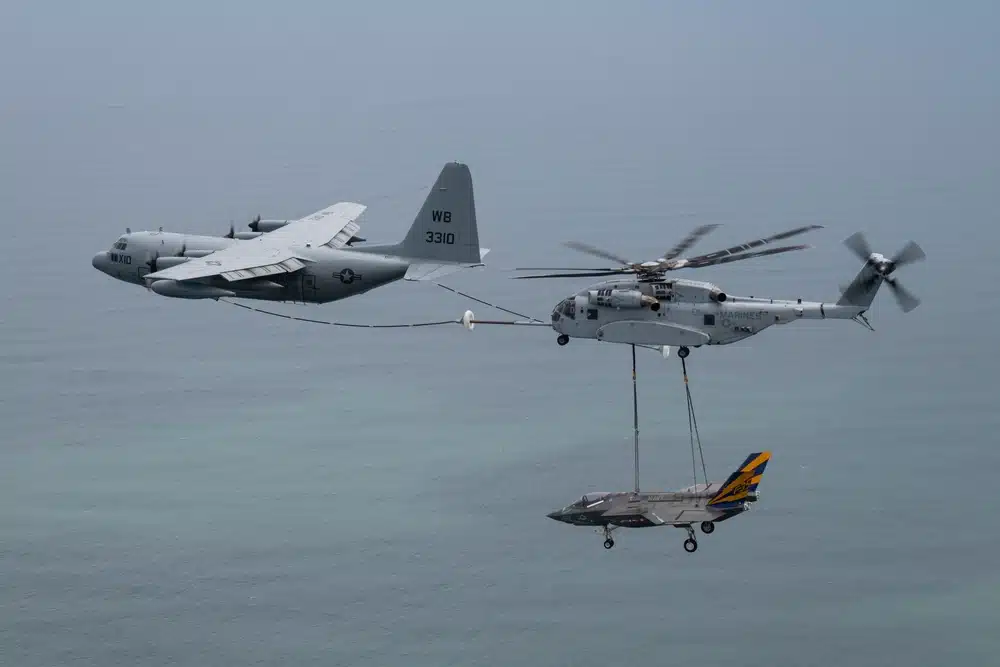A large helicopter is refueled in flight while transporting a F-35 fighter plane. The description may seem strange, but that is exactly what happened in the United States on Wednesday (24), in an operation conducted by the Marine Corps (USMC), using its newest helicopter, the CH-53K King Stallion.
It wasn't the first time the new large aircraft lifted an F-35. By the way, in 2023 the same CH-53 made the same stealth jet fuselage “return to flying”, specifically the F-35C CF-1, the first prototype of the naval variant of the 5th generation jet. This time, the Marines went further, and the heavy helicopter was refueled in flight by a KC-130 Hercules, while transporting the jet.
Check out the images in the video below:
The military transported the F-35 from the Patuxent River base to the Prototyping, Manufacturing and Testing (PMT) Department of the Naval Air Warfare Center's Aircraft Division (NAWCAD) Lakehurst, New Jersey. There, the plane will be used in future tests of emergency recovery systems. In-flight refueling took place over the sea, to avoid overflying occupied areas.
In development since 2006, the CH-53 King Stallion is the replacement for the CH-53E Super Stallion, the USMC's flagship heavy transport helicopter. The aircraft first flew in 2015, the same year the Marines expected to achieve Initial Operational Capability, something that has been postponed ever since.
The organization wants to acquire 200 CH-53K, whose full production has already been approved by the Navy. Capable of lifting 16,3 tons, it is the most powerful single main rotor helicopter in the US fleet.
Some of you had questions: why not fly the jet? Wouldn't it be more economical to just update CF-01 to the latest F-35 configuration?
To shed some light on these questions, let's look at how the F-35 program used its test aircraft.
📸 Kyra Helwick pic.twitter.com/ZGNrl3YI38
— HIGH PLANES Drifter (@the_engi_nerd) April 26, 2024
The new helicopter's advanced capabilities will be crucial to future Marine Corps air operations, especially in the Pacific in potential conflicts with China. Powerful motors, each generating 7.500 pounds on the shaft, along with rotor blades constructed from improved composite materials, ensure optimal performance in high temperature and altitude conditions.
